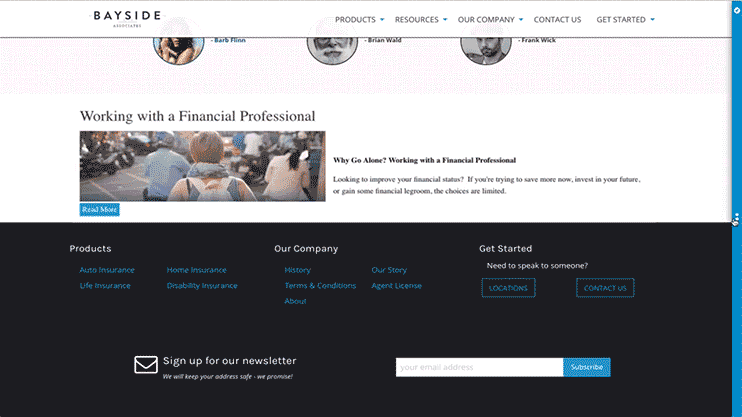Personalization takes flight with the new Acquia Lift
Last week, we launched a new version of Acquia Lift, our personalization tool. Acquia Lift learns about your visitors' interests, preferences and context and uses that information to personalize and contextualize their experience. After more than a year of hard work, Acquia Lift has many new and powerful capabilities. In this post, I want to highlight some of the biggest improvements.
Intuitive user experience
To begin, Acquia Lift's new user interface is based on the outside-in principle. In the case of Acquia Lift, this means that the user interface primarily takes the form of a sidebar that can slide out from the edge of the page when needed. From there, users can drag and drop content into the page and get an instant preview of how the content would look. From the sidebar, you can also switch between different user segments to preview the site for different users. Personalization rules can be configured as A/B tests, and all rules affecting a certain area of a page can easily be visualized and prioritized in context. The new user interface is a lot more intuitive.

Unifying content and customer data
Having a complete view of the customer is one of the core ideas of personalization. This means being able to capture visitor profiles and behavioral data, as well as implicit interests across all channels. Acquia Lift also makes it possible to segment and target audiences in real time based on their behaviors and actions. For example, Acquia Lift can learn that someone is more interested in "tennis" than "soccer" and will use that information to serve more tennis news.
It is equally important to have a complete view of the content and experiences that you can deliver to those customers. The latest version of Acquia Lift can aggregate content from any source. This means that the Acquia Lift tray shows you content from all your sites and not just the site you're on. You can drag content from an ecommerce platform into a Drupal site and vice versa. The rendering of the content can be done inside Drupal or directly from the content's source (in this case the ecommerce platform). A central view of all your organization's content enables marketers to streamline the distribution process and deliver the most relevant content to their customers, regardless of where that content was stored originally.
Content can also be displayed in any number of ways. Just as content in Drupal can have different "display modes" (i.e. short form, long form, hero banner, sidebar image, etc), content in Acquia Lift can also be selected for the right display format in addition to the right audience. In fact, when you connect a Drupal site to Acquia Lift, you can simply configure which "entities" should be indexed inside of Acquia Lift and which "display modes" should be available, allowing you to reuse all of your existing content and configurations. Without this capability, marketers are forced to duplicate the same piece of content in different platforms and in several different formats for each use. Building a consistent experience across all channels in a personalized way then becomes incredibly difficult to manage. The new capabilities of Acquia Lift remedy this pain point.
The best for Drupal, and beyond
We've always focused on making Acquia Lift the best personalization solution for Drupal, but we realize that customers have other technology in place. The latest version of Acquia Lift can be installed on any Drupal or non-Drupal website through a simple JavaScript tag (much like the way you might install Google Analytics). So whether it's a legacy system, a JavaScript application, a decoupled Drupal build with custom front end, or a non-Drupal commerce site, they can all be personalized and connected with Acquia Lift.
In addition, we've also taken an API-first approach. The new version of Acquia Lift comes with an open API, which can be used for tracking events, retrieving user segments in real time, and showing decisions and content inside of any application. Developers can now use this capability to extend beyond the Lift UI and integrate behavioral tracking and personalization with experiences beyond the web, such as mobile applications or email.
I believe personalization and contextualization are becoming critical building blocks in the future of the web. Earlier this year I wrote that personalization is one of the most important trends in how digital experiences are being built today and will be built in the future. Tools like Acquia Lift allow organizations to better understand their customer's context and preferences so they can continue to deliver the best digital experiences. With the latest release of Acquia Lift, we've taken everything we've learned in personalization over the past several years to build a tool that is both flexible and easy to use. I'm excited to see the new Acquia Lift in the hands of our customers and partners.
— Dries Buytaert
Dries Buytaert is an Open Source advocate and technology executive. More than 10,000 people are subscribed to his blog. Sign up to have new posts emailed to you or subscribe using RSS. Write to Dries Buytaert at dries@buytaert.net.